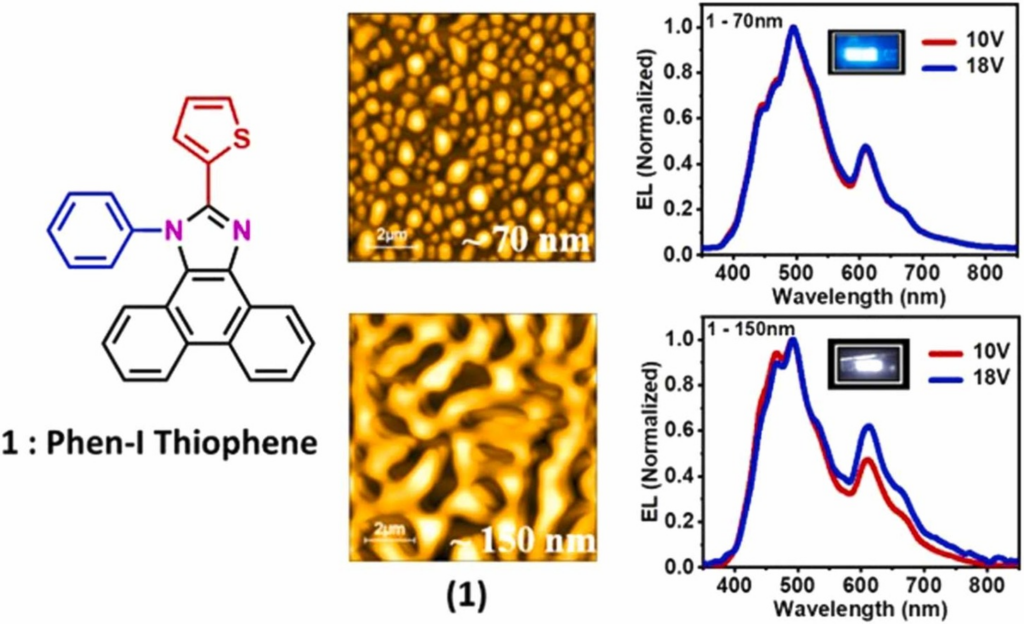New research out of the University of Mumbai investigates the characteristics and performance of organic light-emitting diodes (OLEDs) fabricated using derivatives of Phenanthroimidazole (Phen-I), specifically focusing on how the thickness of the active emissive layer (EML) influences the color purity and device efficiency of white OLEDs (WOLEDs). The two derivatives studied are differentiated by their functional groups: one has thiophene (referred to as compound 1) and the other has perylene (referred to as compound 2).
When thiophene-based Phen-I is used to form WOLEDs, the color purity of these devices can be tuned by adjusting the thickness of the active layer. Specifically, devices with a thinner EML (~70 nm) exhibit bluish-white emission, while those with a thicker EML (> ~100 nm) show tunable color from bluish-white to almost pure white under different voltages. This tunability and white light emission result from a combination of monomer and electromer emissions. Electromer emission, which becomes more prominent at higher EML thicknesses, indicates stronger intermolecular interactions within the material, leading to the observed voltage-dependent change in color purity.

Perylene-based Phen-I, on the other hand, shows no thickness-dependent color purity change in its OLEDs. Devices made with this compound emit yellow-orange light, regardless of the EML’s thickness. This behavior suggests a lack of significant electromer emissions, attributed to the structural properties of compound 2, which do not favor strong intermolecular interactions necessary for electromer formation.
The study also notes that while the formation of electromers in devices using compound 1 enables the achievement of WOLEDs, it also leads to reduced device efficiency compared to devices made with compound 2. This indicates a trade-off between achieving desired optical properties (such as white light emission) and maintaining high device efficiency.
The paper concludes that the functional group attached to the Phen-I core significantly impacts the thin film properties and, consequently, the OLED device properties. Specifically, the thiophene derivative (compound 1) can form WOLEDs through combined emission from electromers and monomers, while the perylene derivative (compound 2) does not show this capability.
In essence, this research highlights the importance of molecular design and the physical thickness of the active layer in developing efficient and color-tunable WOLEDs, showcasing how specific molecular modifications can influence the photophysical interactions and device performance of OLEDs.
Reference
Gupta, C. V., Dixit, S. J., Agarwal, N., & Bose, S. (2024). Film thickness dependent color purity of WOLEDs in a Phenanthroimidazole derivative due to Electromers. Synthetic Metals, 117570. https://doi.org/10.1016/j.synthmet.2024.117570

